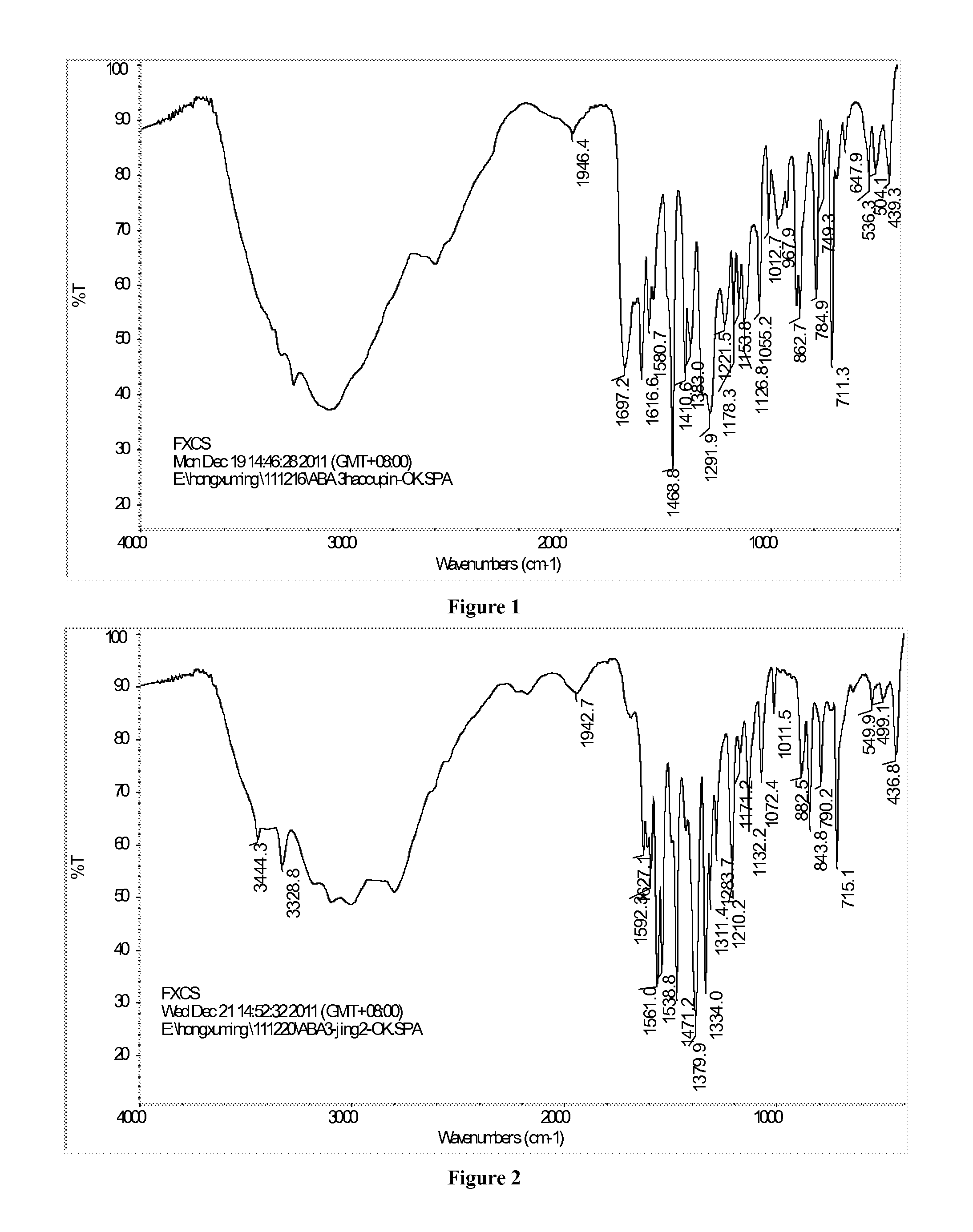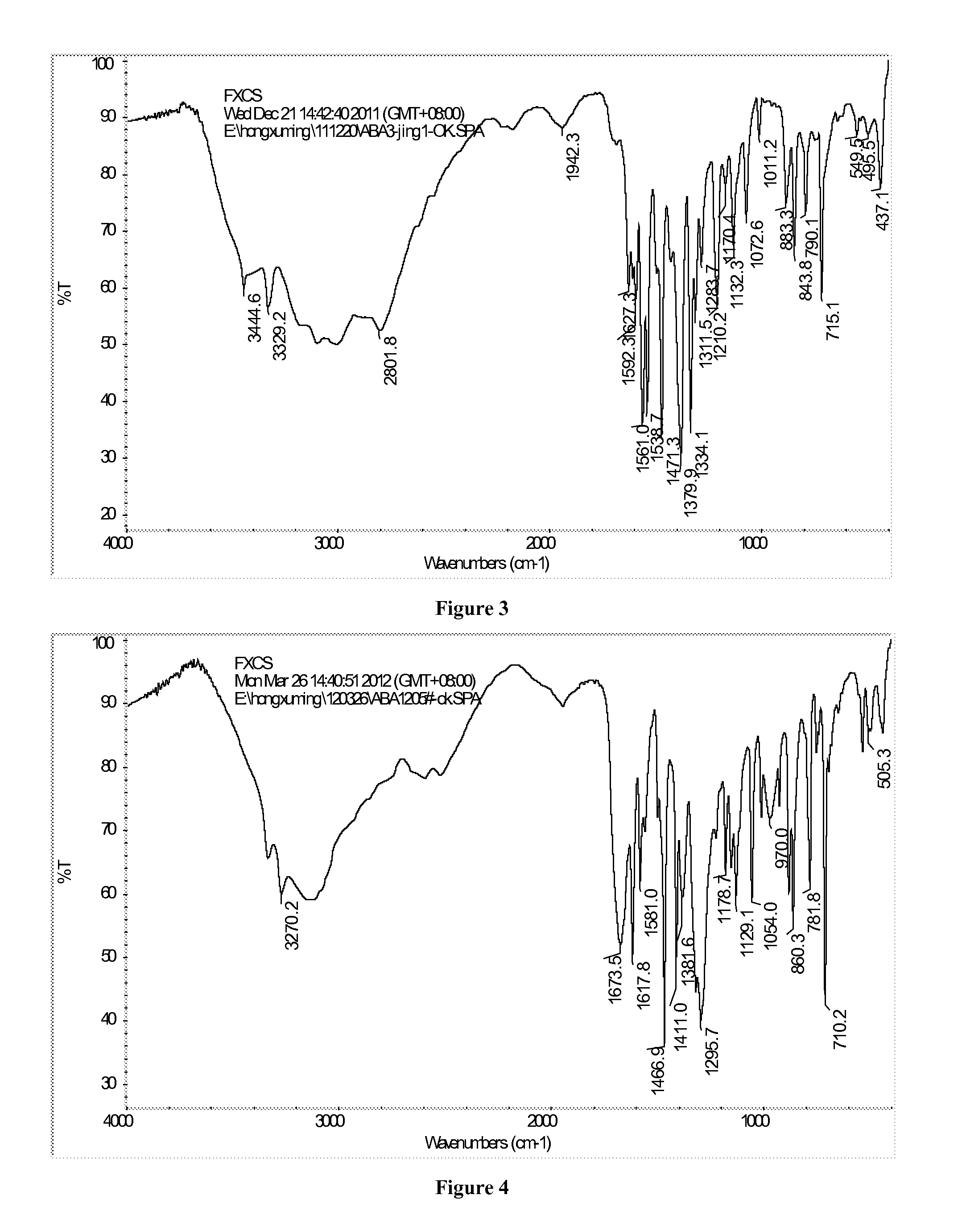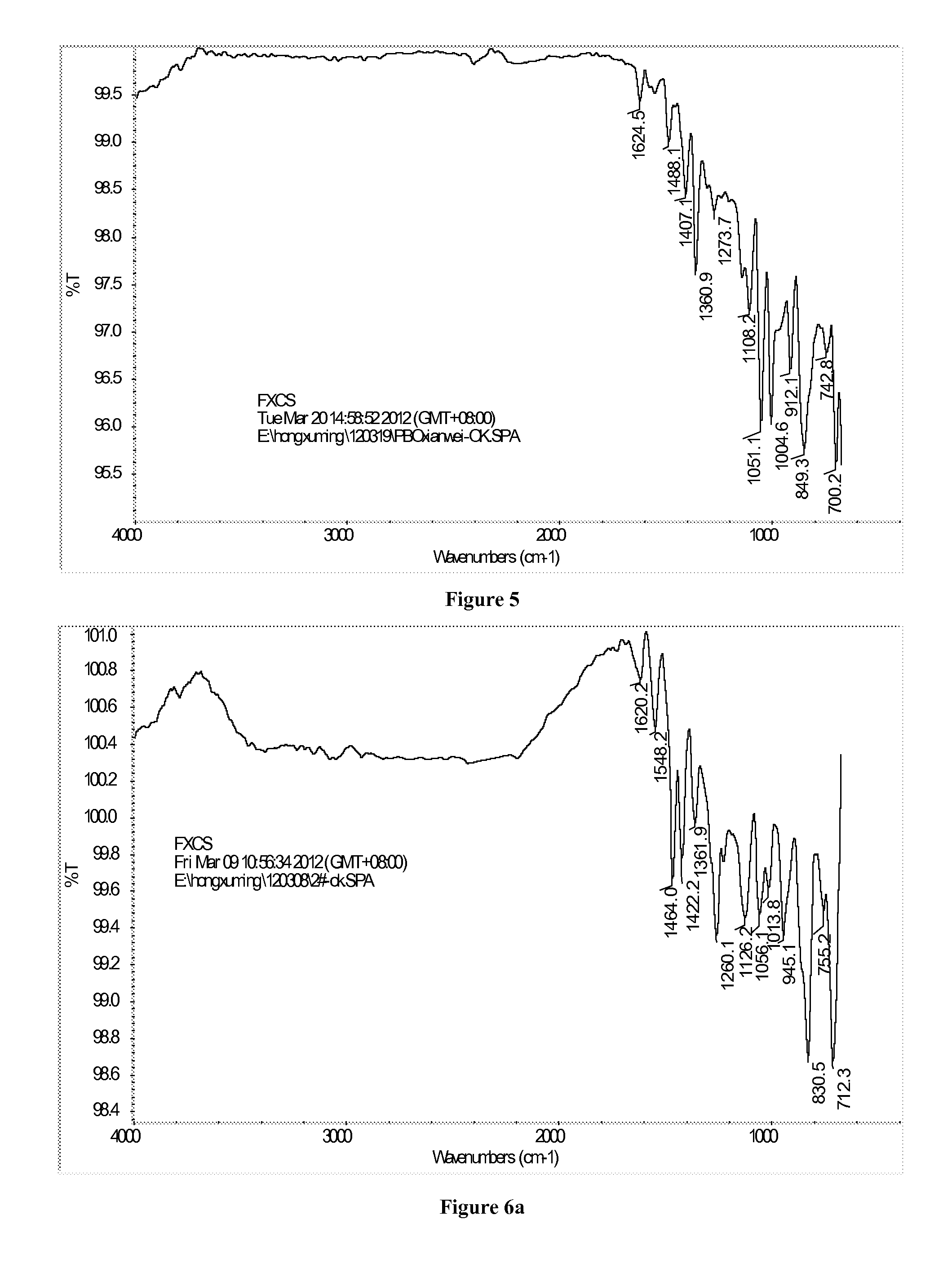4-(5-Amino-6-Hydroxybenzoxazol-2-YL) Ammonium Benzoate and Preparation Method and Use Thereof
a technology of ammonium benzoate and amino-6-hydroxybenzoxazol, which is applied in the field of ammonium 4(5amino-6-hydroxybenzoxazol2yl) benzoate, can solve the problems of high price, large use of dehydrating agent tspp, and easy decomposition and extraction of aba, and achieves simple and safe operation, less pollution, and economic saving
- Summary
- Abstract
- Description
- Claims
- Application Information
AI Technical Summary
Benefits of technology
Problems solved by technology
Method used
Image
Examples
example 1
Using ABA as the Raw Material to Prepare ABAA
[0066](1) 13.5 g (0.05 mol) of crude ABA (with purity of 98.82%, K+: 5489 ppm, Na+: 155 ppm, Fe: 75 ppm, IR: FIG. 1) and 326 mL of deionized water were added into a reaction vessel. The mixture was stirred and heated to 60° C., and 50 g of 25% ammonia water (0.73 mol) was dropwise added within 5 min. After ABA dissolved, 1.5 g of activated carbon was added and the reaction mixture was heated to 80° C. After adsorbing impurities for 10 min, the reaction mixture was filtered at 65˜70° C., then, 4.5 g of ammonium sulfite was added into the filtrate, and ammonia was removed from the filtrate at 60˜80° C. for 1 h in vacuum until the pH of filtrate was 7.0. The reaction solution was cooled to room temperature and filtered again, the filter cake was mixed with 150 mL of deionized water, the mixture was filtered and the resulting filter cake was vacuum dried at 60° C. to get 10.8 g (0.0376 mol) of ABAA, which was a yellow crystal with purity of 9...
example 2
Using Crude ABA as the Raw Material to Prepare ABAA
[0068]20.0 g (0.074 mol) of crude ABA (with purity of 98.22%, content of inorganic salts of 10%, K+: 362 ppm, Na+: 50773 ppm, Fe: 239 ppm, IR similar to FIG. 1, prepared by NBA-sodium dithionite reduction in Patent CN 200610155719.8) and 400 mL of deionized water were added into a reaction vessel. The mixture was stirred and heated to 75° C., and 120 g of 25% ammonia water (1.76 mol) was added dropwise within 5 min. After the crude ABA dissolved, 2.0 g of activated carbon was added and the mixture was heated to 80° C. After adsorbing purities for 10 min, the mixture was filtered at 65˜70° C., then, 5.0 g of ammonium sulfite was added into the filtrate, ammonia was removed at 55˜70° C. for 1 h and 20 min in vacuum until the pH of filtrate was 7.0, then the filtrate was cooled to room temperature and filtered again. The filter cake was mixed with 200 mL of deionized water, the mixture was filtered and the resulting filter cake was vac...
example 3
Using ABAA as the Raw Material to Prepare ABAA
[0069]10.0 g of ABAA prepared by example 2 (with purity of 99.27%, K+: 34 ppm, Na+: 3692 ppm, Fe: 22 ppm) and 500 mL of deionized water were added into a reaction vessel. The mixture was stirred and heated to 60° C., and 70 g of 25% ammonia water (1.03 mol) was dropwise added within 5 min. After ABAA dissolved, 1.0 g of activated carbon was added and the mixture was heated to 80° C. After adsorbing impurities for 10 min, the mixture was filtered at 65˜70° C., then, 2.3 g of ammonium sulfite was added into the filtrate. Ammonia was removed at 60˜80° C. for 1 h in vacuum until the pH of filtrate was 7.5, then the filtrate was cooled to room temperature and filtered again. The filter cake was mixed with 150 mL of deionized water, the mixture was filtered and the resulting filter cake was vacuum dried at 60° C. to obtain 8.1 g of refined ABAA, which was a yellow crystal with purity of 99.53%, total content of metal ions of 176 ppm (K 0.0 ppm...
PUM
| Property | Measurement | Unit |
|---|---|---|
| temperature | aaaaa | aaaaa |
| temperature | aaaaa | aaaaa |
| temperature | aaaaa | aaaaa |
Abstract
Description
Claims
Application Information
 Login to View More
Login to View More - R&D
- Intellectual Property
- Life Sciences
- Materials
- Tech Scout
- Unparalleled Data Quality
- Higher Quality Content
- 60% Fewer Hallucinations
Browse by: Latest US Patents, China's latest patents, Technical Efficacy Thesaurus, Application Domain, Technology Topic, Popular Technical Reports.
© 2025 PatSnap. All rights reserved.Legal|Privacy policy|Modern Slavery Act Transparency Statement|Sitemap|About US| Contact US: help@patsnap.com



